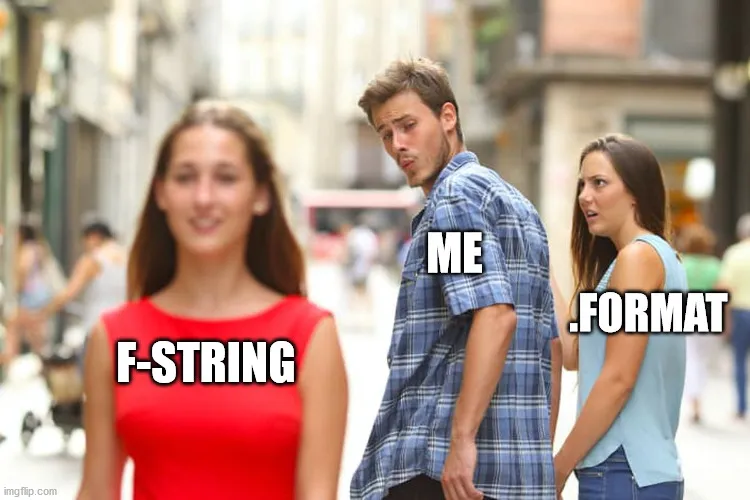If you want to learn more about how to tame python you have come to the right post. Because this post is all about getting sexy with a string :D

Whenever I had a string into which I have to input something like length_rod = 8 I would type
"If you upvote this you have a {} inch rod".format(length_rod).
This pretty much inserts the lengthy rod where you want it. You can also reference them by index so
"I will hit {0} in the face for {1}".format('justin','free').
Reference parameters can be used together with .format exactly in the way you expect it
"Nobody expects {unexpected}".format(unexpected= 'the Spanish inquisition').
But you can imagine if it gets very long then things get complicated and confusing. There is also the %-formating which is something that all basic python tutorials treat but I think that's is only more ugly than .format. Anyway that f-string trumps all of these.
For an f-string everything is super simple. If you first define Sun = "Scum" then you can insert the assigned value to Sun into a string by just typing f"Justin {Sun}". Hence, the name f-string. Besides its simplicity you can also perform operations within a f-string this means that python is totally okay with you running
f"A whale p-nis is about {5*50} cm"
Of course you can also define something and use it within an f-string which is awesome. Anyway, hope that convinced you to use f-strings.
Here is a proper tutorial. ;)